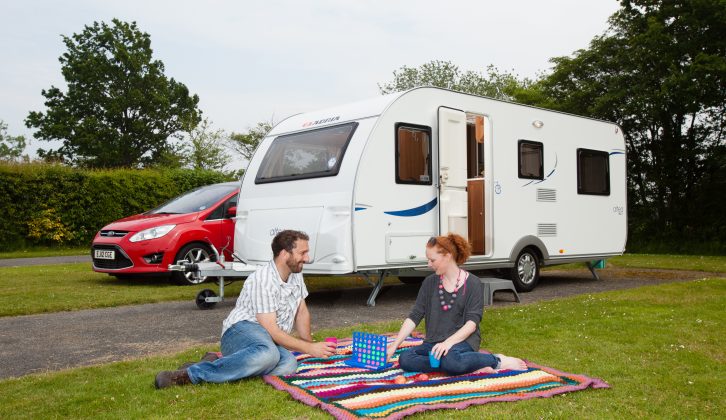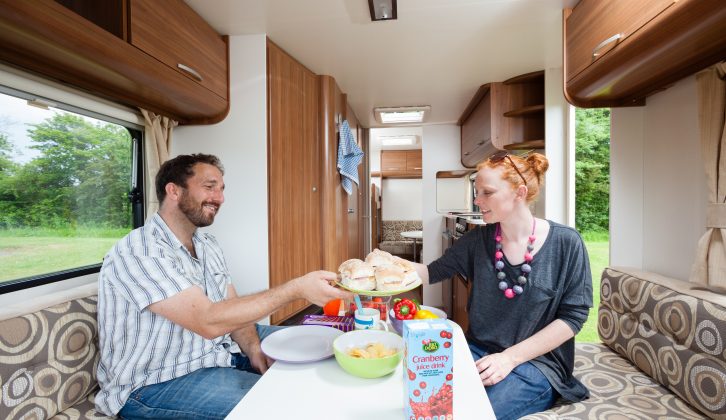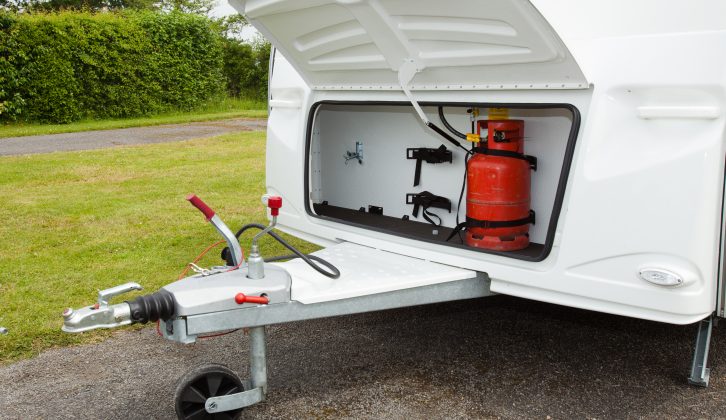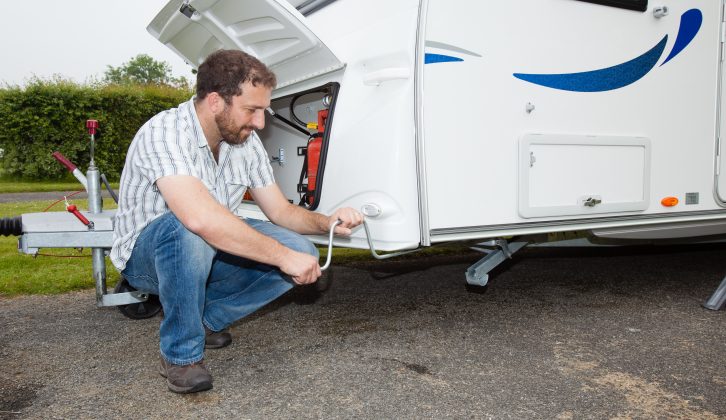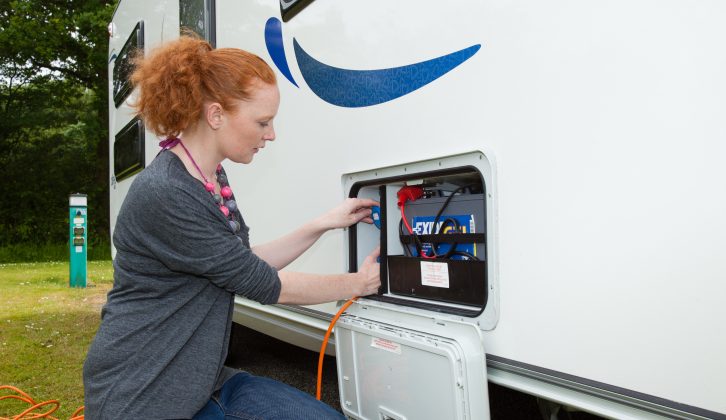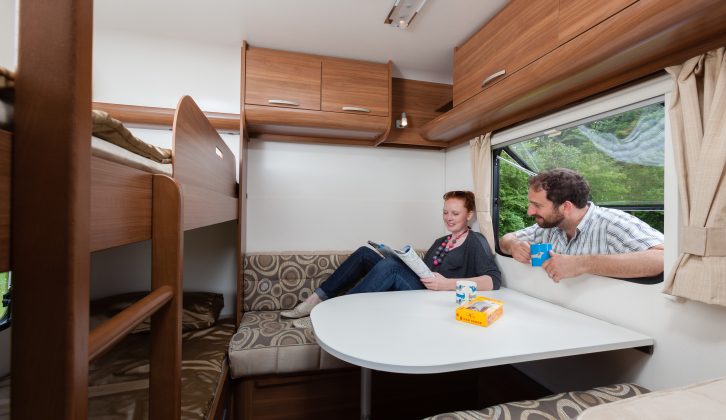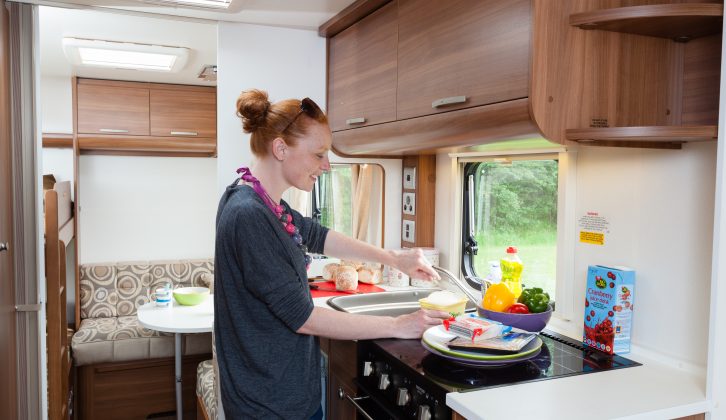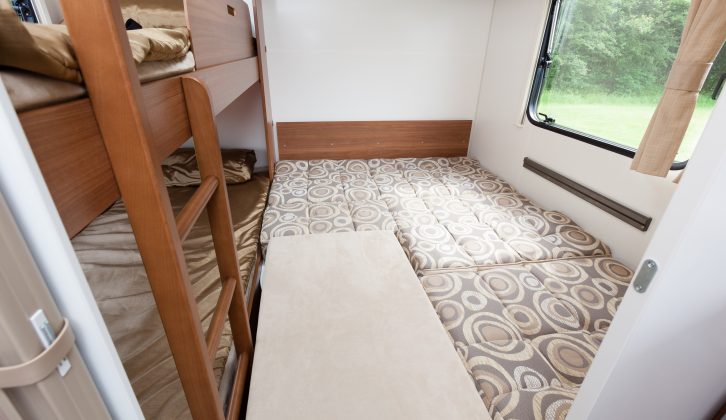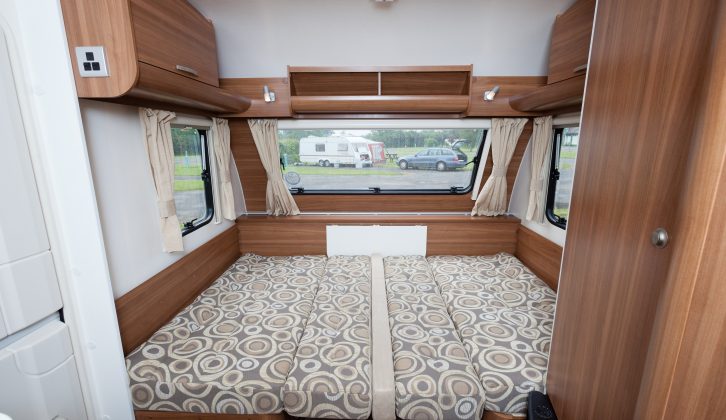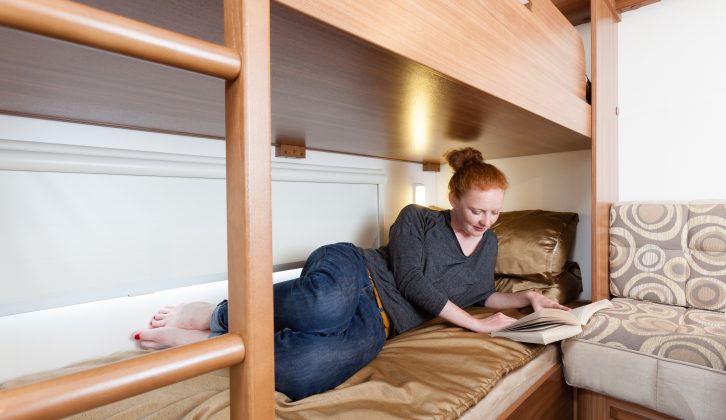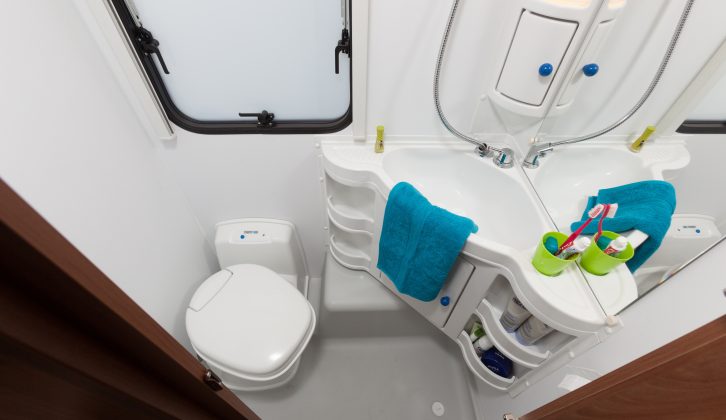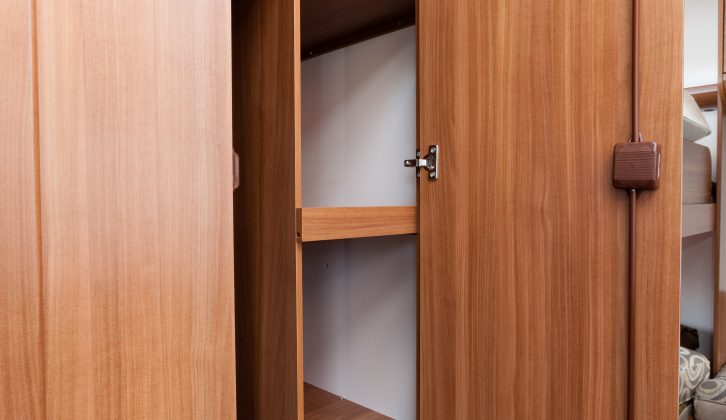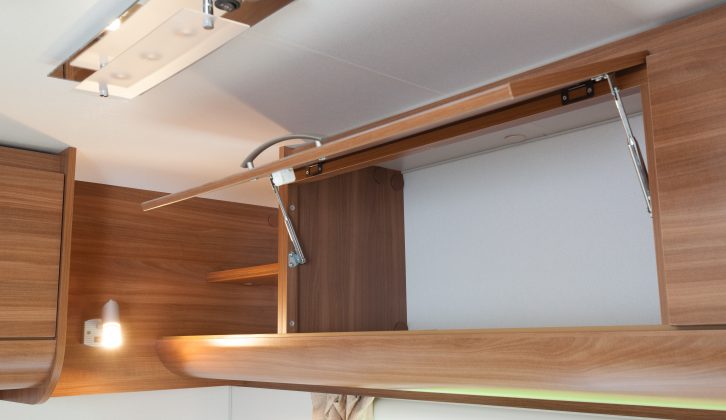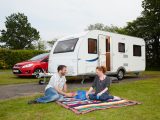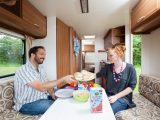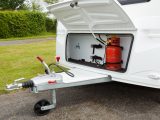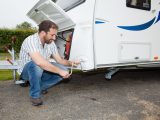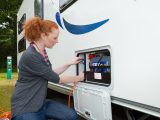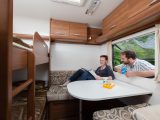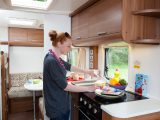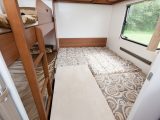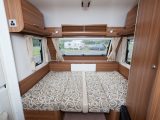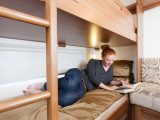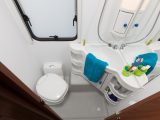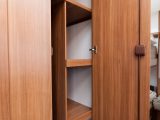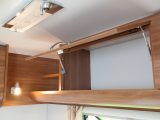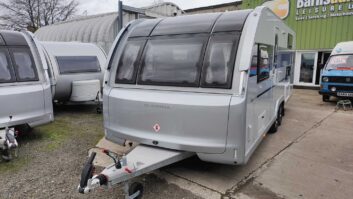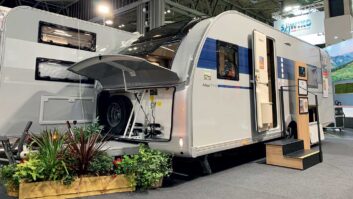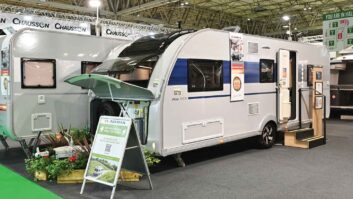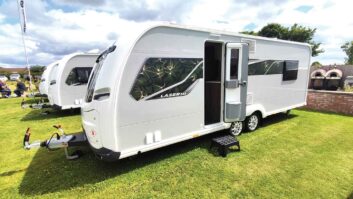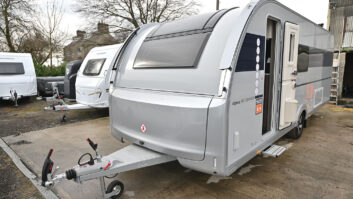Verdict
As the lightest among the current crop of genuine six-berth caravans, the Adria Altea 542 DK is one of the best lightweight family tourers on the market. It’s attractively styled and robustly constructed, with a good basic specification. It is only really in the washroom where the floor plan falls short.
For the 2013 season, Adria is renaming the Altea 542 DK the Severn and rethinking the model’s design, with changes to the rear living space. Rather than a two-seater bench across the rear wall, it’s now a twin, single-seater dinette that converts to a set of bunk beds. The kitchen serving hatch has disappeared, too. We think these tweaks put it in a strong position and make the revamped, 2013 van worthy of serious consideration.
Pros
A very light six-berth
Two separate lounges are handy for large families
The kitchen has a good amount of space
Cons
The front steadies are rather hard to locate
Lighting inside could be better
The washroom is a little tight
Slovenian manufacturer Adria began building caravans in 1965, exporting its first models to the UK in the mid-1970s. It has since grown to become the UK’s leading import brand. It was also the first Continental manufacturer to gain NCC approval for its UK tourers.
On test here is a 2012-season Adria Altea 542 DK. The Altea is Adria’s entry-level range, comprising four models, each to house four to six occupants. In recent seasons, Adria has become known for its cutting-edge style and lightweight practicality.
The 542 DK is a six-berth, double-dinette tourer, with parallel seats at the front, transverse sofas at the rear, plus fixed bunks along the offside wall by the corner. There is a small washroom on the offside and also a compact kitchen just across the gangway.
Adria’s unique polyester wall technology, which features tough plastic sidewalls, makes them more resistant to dents, dings and scratches than those on conventional aluminium-clad tourers produced by most manufacturers in the entry-level sector.
What’s more, its MTPLM of 1300kg makes this the lightest 2012-season six-berth on the market – we towed it with a Ford Grand C-Max boasting a kerbweight of 1634kg, making for an 80% match. How will it fare as a tourer in coping with the demands of a budget-minded family?
Its MTPLM of 1300kg makes this the lightest 2012-season six-berth
Pitching & Setting-up
The polyester sidewalls and roof are durable and finished in an eye-catching high gloss, and the Altea’s modern, boxy shape is softened somewhat by its rounded front and rear panels. There are several external clues to its budget status, including the single front window and the basic graphic treatment to the front, sidewalls and rear panel.
The unadorned A-frame is another giveaway to this caravan’s status, as is the hitch head, which is not fitted with a stabiliser. The buttonless handbrake is easy to apply, though, and the large gas locker is simple to access because the gas strut lifts the door right out of the way and there is a very little locker lip to obstruct gas cylinder replacement.
The front and rear panels are made from tough ABS and feature moulded, horizontal grabhandles, which make manoeuvring the van on site simple enough. However, we found the front steadies rather difficult to locate. The winding nuts are some way back from the front panel, and there’s no groove in the moulding to give you direction. What’s more, the steady winder fouled the panel while in use.
On the offside are a Truma Ultraflow water inlet, the toilet cassette locker and the battery locker, which also includes the electric hook-up socket. The nearside simply features an external access locker to the front seat box. The two-piece entry door has a built-in waste bin, but no window or flyscreen.
Living
The interior styling is simple and unadorned, with dark wood effect lockers and cream veneer surfaces throughout, married with beige curtains and brown, patterned upholstery. The windows are unframed, and the wall linings are undecorated, but our testers rather liked the clean, minimalist feel. Drop-in carpets are optional.
There are two separate lounges, which is good news for a family of six. The facing sofas up front are served by a flimsy fold-out surface for coffee cups and the like, or a full free-standing table, which is stashed in a dedicated storage locker when not in use. It’s fine for four at mealtimes, but is considerably lower than the hinged surface, so it’s not designed to seat six diners.
The seatbacks are rather upright, but vent boards behind them will help cut condensation on the interior walls. A single mains socket serves the front lounge.
Lighting, both electrical and natural, is in short supply in the front lounge: there’s no skylight, just a three-bulb ceiling light (which has two settings) and two directional reading lights. The transverse rear lounge features a two-seat sofa across the rear wall, which meets the longitudinal fixed bunk beds, and a single seat facing rearwards.
A round edged table clips to a rail on the nearside wall, and a kitchen hatch makes serving food that little bit quicker and easier. A rooflight and large side window illuminate the area by day, while the ceiling has the same three-bulb lighting strip as in the front lounge, plus a pair of spotlights for reading.
A Truma space heater with blown-air system is beneath the wardrobe, where you’ll also find the dual-fuel water boiler.
Kitchen
The corridor between the two lounges, with the kitchen on the nearside and the washroom on the offside, is large and open, affording chefs plenty of room to manoeuvre. Again, lighting is in rather short supply here, with a strip light only, although there is a further rooflight for ventilation. One of our testers wondered whether the attractive white worktop veneer was practical for preparing meals over time – it could be liable to staining.
There’s a generous, deep stainless-steel sink, a three-burner gas hob and a combined oven and grill. The access hatch to the rear lounge area can also be used as preparation space, although it is rather flimsy and prevents the single seat from being used.
Storage is ample, although no clip-on drainer or chopping board is thrown in, which now seems a prerequisite for British manufacturers. A Thetford analogue-control fridge sits beneath the kitchen sink. A control panel to activate the water pump and monitor the battery level is in the kitchen, along with a mains socket.
Washroom
The wide corridor through this caravan is great for access and gives good room for cooks to manoeuvre, but it squeezes the washroom, which measures just 108cm x 72cm. Oddly it took our testers a short while to find the washroom’s light switch, which is concealed within its own plastic locker.
We found legroom on the swivel toilet to be rather compromised by the washroom door and the basin-cupboard unit. The washroom is fully lined and doubles as the shower, with a curtain to protect the wooden door from water. This leaves little space for your morning ablutions, especially considering that the wheel arch intrudes into the floor space, as does the corner washbasin unit.
We’re pleased, though, that the washroom comes with an opaque, frosted window – by far preferable to a see-through window.
Beds
The front lounge makes up into a transverse double bed with slats that are pulled out from the central chest. The backrests and slim infill cushions make up the sleeping surface.
The rear is partitioned from the rest of the van by a concertina blind, creating a dedicated bedroom. The single bunks are best for younger children; the weight limit on the upper bunk is just 70kg. A wooden guard rail will prevent children from falling out.
Both bunks have windows, and the upper one is netted to prevent falls if the window catch fails. Both beds benefit from a strip light with decorative elephants, perfect for younger kids.
The rear dinette can be converted into a double bed by lowering the table to form the bed base, sliding out the shorter seat bench toward the lower bunk, and making use of a separate piece of untreated plywood to fill out the surface. Sensibly, the ladder to the upper bunk is fixed, so access to and from it even with the lower double bed made up is unhindered.
The real quandary for family buyers concerns whether two of the four children are young enough to be happy about sharing a double bed for the next few years.
Storage
A family of six should have no trouble finding places for all their kit, whether in the wardrobe or shelved storage on either side of the washroom. There’s also usable storage space under the lower fixed bunk, accessed via the hinged, self-supporting base.
A dresser across from the galley and next to the main door offers further shelving. There’s space inside all the seat boxes; the front ones have locker door flaps for easy access. Overhead lockers throughout complete the set.
Technical Specifications
| Berth | 6 |
| MiRO | 1135 kg |
| Payload | 165 kg |
| MTPLM | 1300 kg |
| Shipping Length | 7.23 m |
| Width | 2.3 m |
